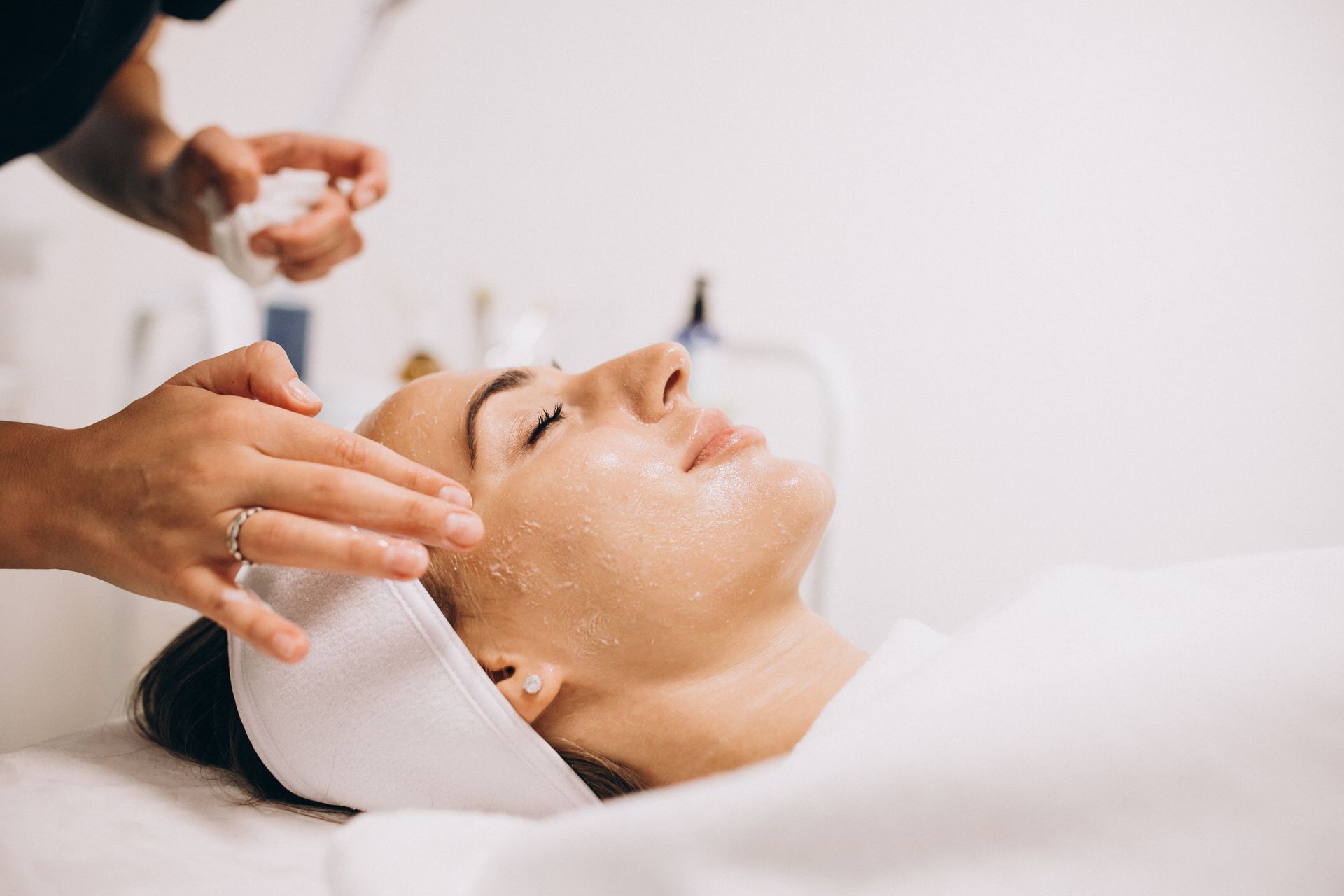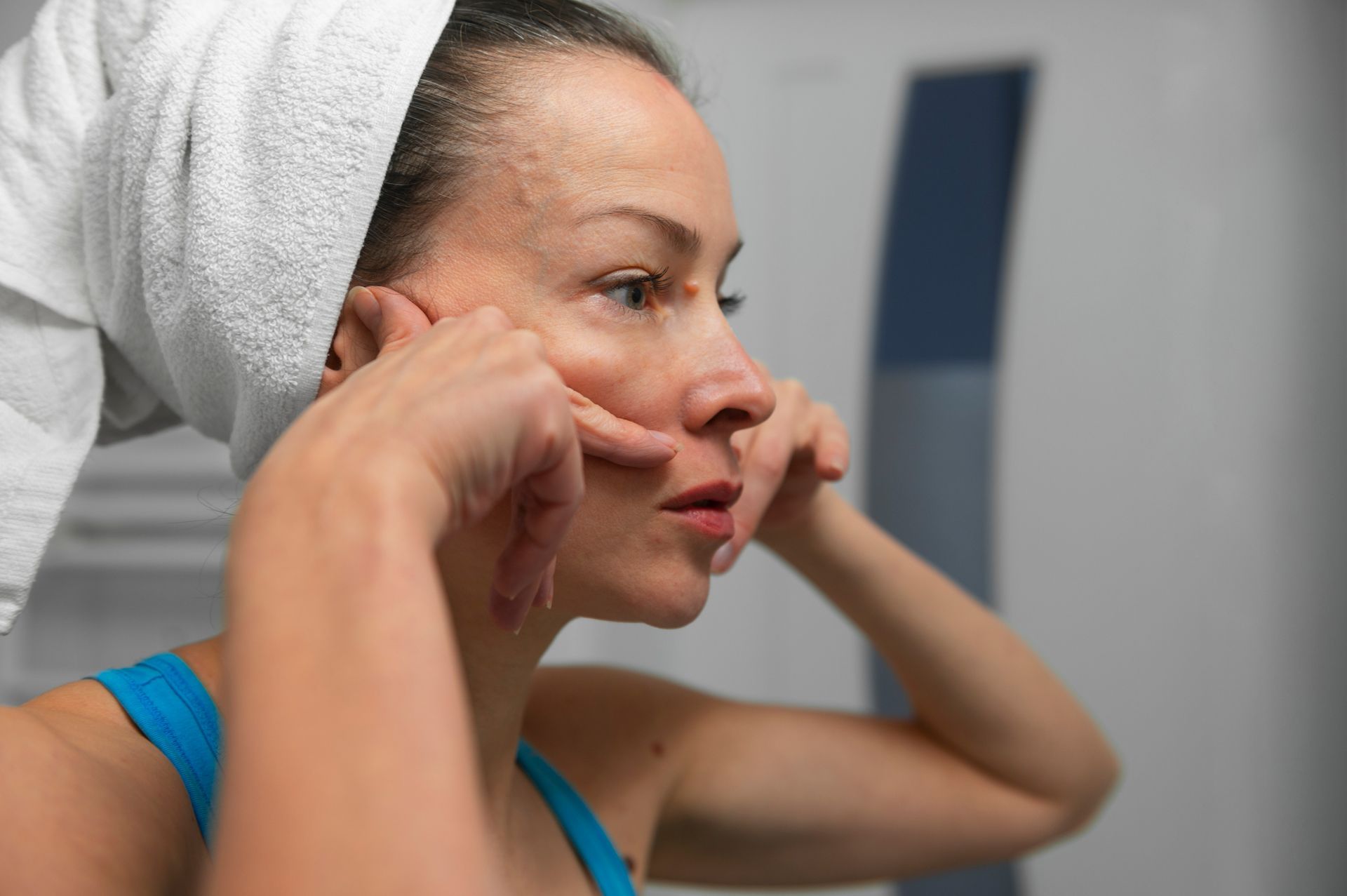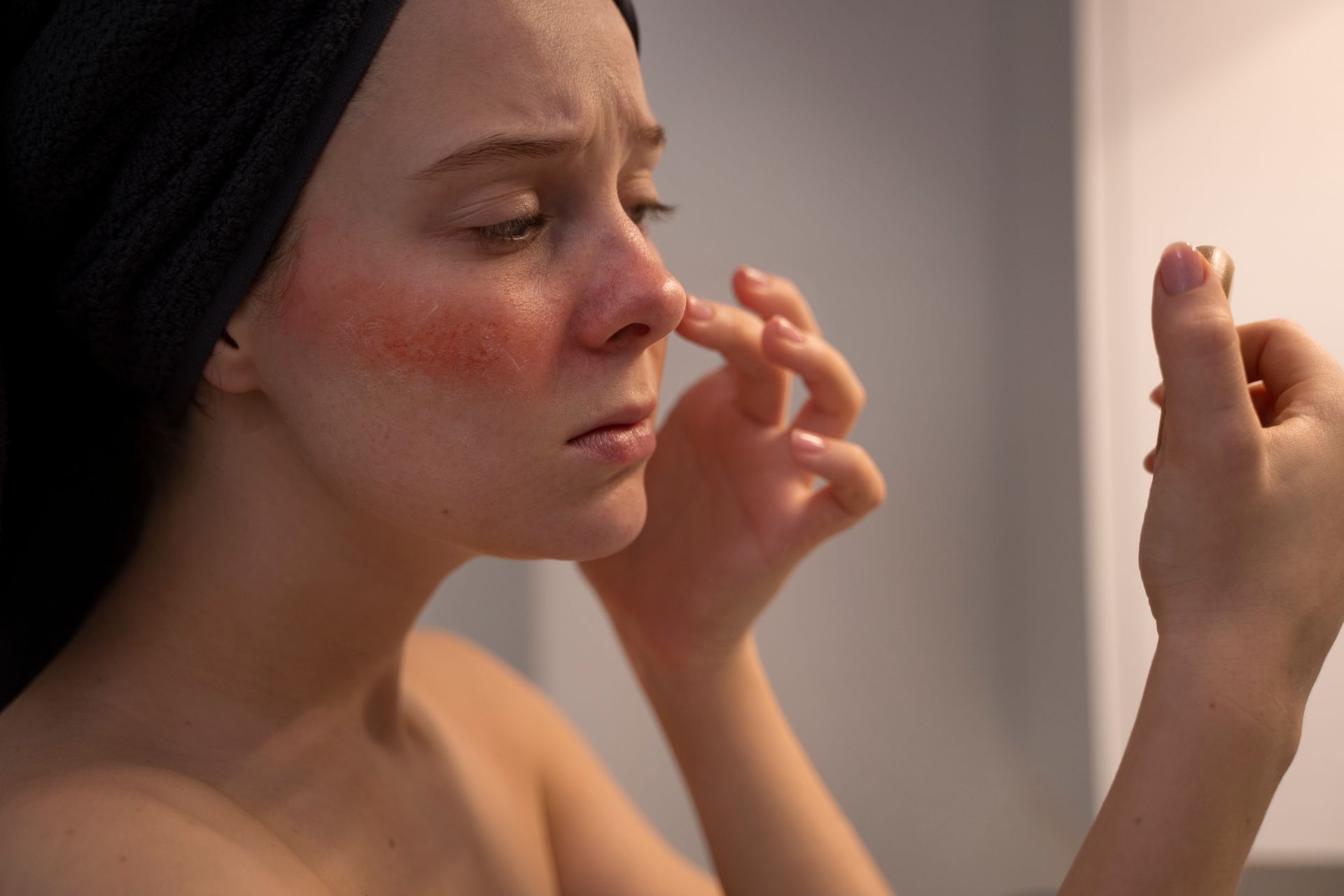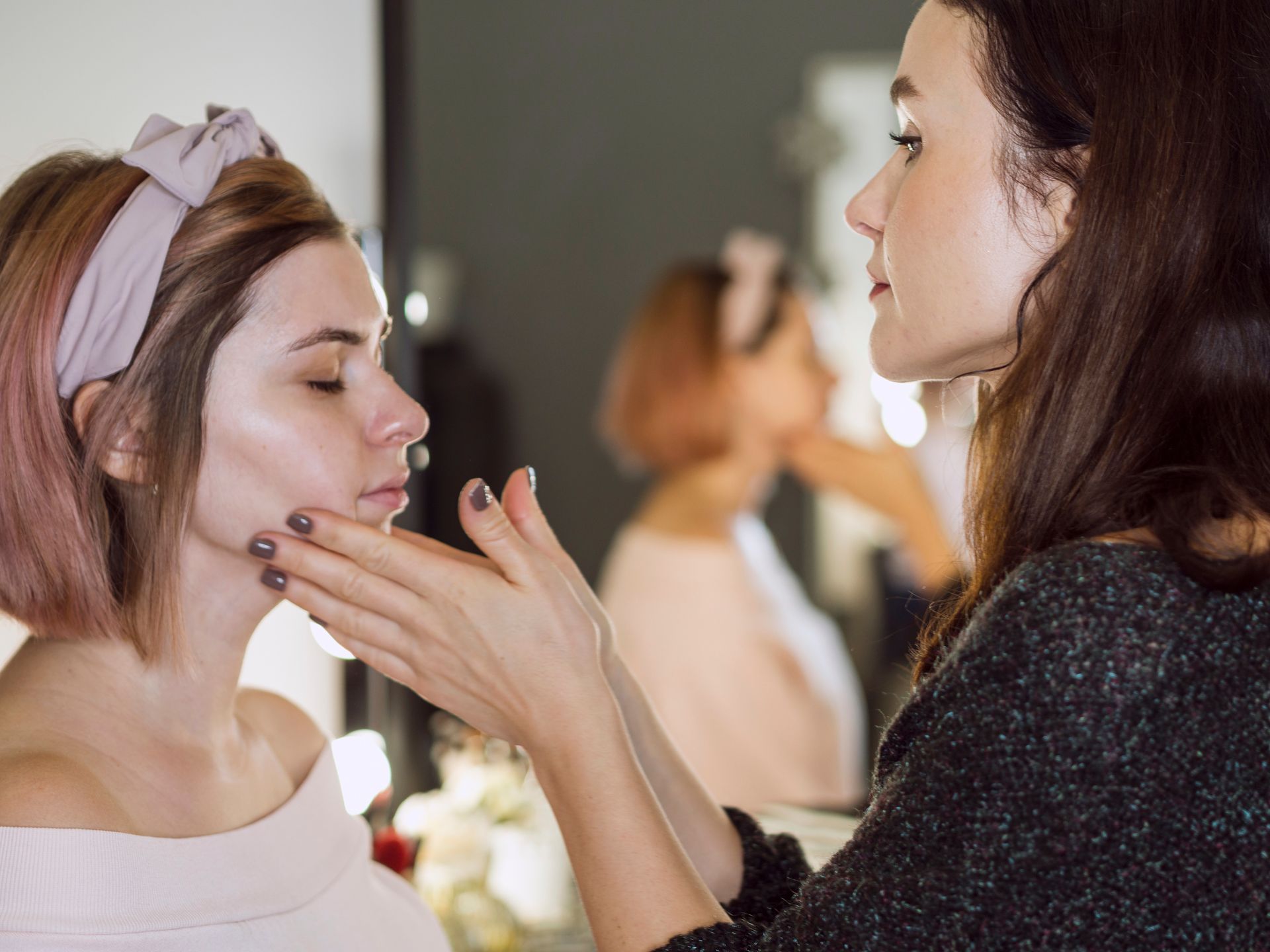Laser Hair Removal for Different Skin Types: Customized Solutions
For many individuals, the monotonous routine of shaving and waxing has become a tiresome and time-consuming chore. As a result, laser hair removal has gained widespread popularity as the go-to method for achieving hair-free faces and bodies. Initially, the ideal candidate was perceived to have thick, dark hair and fair skin. However, the desire for smooth, hairless skin transcends all skin and hair types, prompting a need for customized solutions. While in the early days of its popularity, laser hair removal was discouraged for those with darker skin due to potential side effects, modern advancements have made it a safe and viable option for individuals of all skin types, granting everyone the freedom to embrace smooth, hair-free skin without hesitation.
The era of one-size-fits-all approaches to laser hair removal is long gone. Today, personalized and customized solutions cater to the unique needs of each individual, making laser hair removal a safe, effective, and convenient choice for people of all skin types. Whether you're dreaming of a hair-free face, underarms, legs, or any other part of your body, professional laser hair removal can offer you a customized experience that guarantees smoother, hairless skin, regardless of your skin's complexion or hair's texture. Embrace the freedom from constant hair removal routines and unlock the potential of customized laser hair removal for the radiant, hair-free skin you desire.
Brief Overview of Laser Hair Removal Technology
Laser hair removal technology employs concentrated beams of light to target hair follicles. The laser emits a targeted wavelength that gets absorbed by the pigment (melanin) present in the hair. This absorption transforms light energy into heat, effectively damaging the hair follicle and impeding future hair growth.
The success and safety of laser hair removal are heavily influenced by an individual's skin type. The Fitzpatrick Scale is commonly used to categorize different skin types based on their response to sun exposure and susceptibility to burns or hyperpigmentation. Understanding the skin type is essential as it helps determine the appropriate laser type, settings, and the number of treatment sessions needed for the best outcome. Treating various skin types with a customized approach ensures that each client receives the most effective and safe treatment possible.
The Science Behind Laser Hair Removal
Laser hair removal has revolutionized the approach to achieving long-term hair reduction. Understanding the fundamental principles behind this innovative procedure is crucial to appreciating its effectiveness.
Different types of lasers are utilized in laser hair removal, each with its specific advantages and ideal skin and hair type suitability. Common lasers used include Alexandrite, Diode, Nd:YAG, and Ruby lasers. The selection of the appropriate laser depends on the patient's skin type, hair color, and the treatment area. Melanin, the pigment responsible for hair color, is a key component in the laser hair removal process. The laser's energy is attracted to the melanin in the hair follicle, enabling precise targeting and selective destruction of the hair without harming surrounding tissues.
Several factors influence the effectiveness of laser hair removal, and understanding these can contribute to achieving the desired outcomes. Factors such as hair color, skin type, hair thickness, and the growth stage of the hair follicle can all impact the treatment's success. The number of treatment sessions required may vary based on individual hair growth patterns and response to the laser. Professional practitioners take these factors into account when customizing treatment plans for each patient, ensuring optimal results and maximum satisfaction.
Different Skin Types and Their Characteristics
In order to offer individualized treatments for laser hair removal, it is important to have an understanding of the various skin types. The Fitzpatrick Scale, a widely used classification system, categorizes skin types based on their response to sun exposure and susceptibility to burns or hyperpigmentation.
The Fitzpatrick Scale divides skin types into six categories, ranging from Type I (very fair) to Type VI (deeply pigmented). Each category represents different levels of melanin in the skin and reacts differently to external factors like sun exposure and laser treatments. Identifying which category your skin falls under can significantly influence the safety and effectiveness of laser hair removal.
Characteristics of Each Skin Type and Their Response to Laser Treatment
Each skin type possesses distinct characteristics that impact how it responds to laser hair removal. Fair skin (Type I and II) generally has less melanin, making it more responsive to laser energy but potentially more susceptible to burns. On the other end of the scale, darker skin (Type V and VI) contains higher melanin levels, requiring specialized laser technologies to avoid adverse effects. Understanding these unique characteristics helps tailor laser hair removal treatments to maximize effectiveness and minimize risks.
Accurately identifying your skin type is essential for determining the most suitable laser and treatment plan for optimal results. A qualified practitioner will conduct a thorough skin assessment, considering factors such as natural skin color, tendency to tan or burn, and any existing pigmentation concerns. This assessment allows for the formulation of a personalized approach to laser hair removal, ensuring safety, efficacy, and overall satisfaction with the treatment outcomes. Laser hair removal can accommodate the varied needs of its customers by taking into account their skin tones and textures in order to provide a hairless and smooth experience for everyone.
Laser Hair Removal for Light Skin Types (Type I - III)
Laser hair removal for light skin types (Fitzpatrick Types I to III) offers unique advantages and considerations. Understanding the specific challenges and benefits associated with this skin type ensures safe and effective treatments tailored to individual needs.
Light skin types are generally more responsive to laser energy, which can result in effective hair removal. However, they may be more susceptible to discomfort during the treatment due to increased sensitivity. Balancing the benefits of optimal results with the challenges of potential discomfort is crucial when planning laser hair removal for individuals with light skin.
For light skin types, laser practitioners typically use lasers that emit shorter wavelengths, such as Alexandrite and Diode lasers. These lasers effectively target melanin in hair follicles without causing harm to the surrounding skin. Also, practitioners will adjust the laser's settings to accommodate the individual's specific hair thickness and growth stage, maximizing the treatment's efficiency.
Safety Precautions and Potential Side Effects
While laser hair removal is generally safe for light skin types, certain precautions are essential to minimize potential side effects. The risk of temporary side effects like redness and mild irritation may be higher for lighter skin, but these effects usually subside quickly. To ensure safety, experienced practitioners will perform a patch test to assess the skin's response to the laser before proceeding with full treatment.
Proper post-treatment care is essential to promote healing and achieve the best results. After laser hair removal, individuals with light skin should avoid sun exposure and apply sunscreen to protect the treated area from UV rays. Keeping the skin moisturized and following the practitioner's guidelines will aid in minimizing any potential side effects and enhancing the treatment's overall success.
Laser Hair Removal for Medium Skin Types (Type IV - V)
Laser hair removal for medium skin types (Fitzpatrick Types IV to V) requires special considerations to ensure both safety and effectiveness. With a focus on minimizing the risk of hyperpigmentation and achieving optimal results, customized approaches cater to the unique needs of individuals with medium skin tones.
Medium skin types have higher melanin levels than lighter skin, presenting certain challenges during laser hair removal. The increased melanin can absorb more laser energy, potentially leading to a higher risk of adverse effects such as burns or hyperpigmentation. Therefore, it is essential to employ advanced techniques that safely target hair follicles while minimizing the impact on surrounding skin.
Nd:YAG lasers, with their ability to safely treat darker skin, are the gold standard for laser hair removal in medium skin types. The practitioner will adjust the laser's pulse duration and energy settings to suit the individual's hair and skin characteristics. With this adjustment, the laser can more precisely hit the hair follicles while causing less harm to the surrounding skin.
Laser Hair Removal for Dark Skin Types (Type VI)
Laser hair removal for dark skin types (Fitzpatrick Type VI) requires a delicate approach to overcome unique challenges and minimize risks. With a focus on avoiding burns and discoloration, specialized laser devices and stringent precautions ensure safe and effective treatment for individuals with darker skin tones.
Melanin levels in dark skin are higher, so it can take in more laser energy than lighter skin. As a result, traditional laser hair removal methods can pose a greater risk of burns, hyperpigmentation, and other adverse effects for individuals with Type VI skin. Therefore, a thorough understanding of these challenges is essential to provide tailored and safe treatments for this skin type.
Choosing Laser Devices Suitable for Dark Skin
When performing laser hair removal on dark skin, specialized laser devices are employed to safely target hair follicles while minimizing damage to the surrounding skin. Nd:YAG lasers, with their longer wavelengths, are the preferred choice for dark skin types. These lasers can penetrate deeper into the skin, bypassing the melanin-rich epidermis and selectively targeting the hair follicles.
The risk of burns and discoloration can be significantly reduced by using Nd:YAG lasers and carefully adjusting the laser settings. Ensuring appropriate cooling mechanisms during treatment also helps protect the skin from excessive heat and thermal damage. Individuals with dark skin can safely experience the benefits of laser hair removal by carefully customizing the treatment approach to reduce the risk of adverse effects.
Post-treatment, individuals with dark skin must diligently follow aftercare guidelines. Applying soothing creams, avoiding sun exposure, and using broad-spectrum sunscreen are vital to promote healing and prevent post-treatment complications. Adhering to these precautions fosters optimal recovery and reduces the risk of any potential side effects.
Safety Measures and Risks
Ensuring the safety and well-being of individuals undergoing laser hair removal is paramount. By prioritizing professional consultation, thorough skin assessments, and addressing concerns related to potential risks and side effects, practitioners can provide a secure and tailored experience for their clients.
Professional consultation is the foundation of a successful laser hair removal journey. During the consultation, experienced practitioners will assess the client's skin type, hair characteristics, medical history, and any potential contraindications. This comprehensive evaluation allows for the development of a personalized treatment plan, maximizing the effectiveness of the procedure and minimizing the risk of adverse effects.
Potential Risks and Side Effects for Different Skin Types
Each skin type responds differently to laser hair removal, and being aware of the potential risks is crucial. For lighter skin types, the risk of temporary redness and mild irritation may be higher, while medium and dark skin types may be more prone to hyperpigmentation or burns if not treated with suitable laser devices and settings. Knowledge of these potential risks enables practitioners to implement the appropriate safety measures for each client.
Pain and discomfort are common concerns for individuals considering laser hair removal. While the procedure is generally well-tolerated, the sensation can vary depending on the individual's pain threshold and the treatment area. Practitioners can address these concerns by offering cooling methods, topical anesthetics, or adjusting the laser settings to enhance the client's comfort during the procedure.
The safety and satisfaction of the client can be ensured by learning about their skin type and any allergies they may have. Prior to treatment, clients should inform their practitioner of any known skin sensitivities or allergies to prevent potential adverse reactions. Practitioners can then customize the treatment approach and select appropriate skincare products that are gentle and suitable for the individual's skin type.
Aftercare for Optimal Results
Proper aftercare is essential for maximizing the benefits of laser hair removal, ensuring long-lasting and smooth results. Individuals can get the most out of their laser hair removal treatments by taking the recommended aftercare measures, including moisturizing, sun protection, and dealing with any post-treatment redness or sensitivity. The periodic maintenance sessions can further prolong the effects of the treatment and maintain hair-free skin in an effortless manner.
After laser hair removal, immediate post-treatment care is vital to promoting healing and minimizing discomfort. Guidelines include avoiding hot baths, excessive physical activity, and harsh skincare products. Redness and sensitivity, especially in lighter skin types, can be managed with cool compresses and soothing creams, while sun protection and moisturizing maintain skin health. Adhering to proper aftercare and recommended treatments optimizes the effectiveness of laser hair removal, instilling confidence in the customized journey to radiant and hair-free skin.
Conclusion
In your journey towards smooth and hair-free skin, remember that personalized laser hair removal holds the key to unlocking the full potential of this revolutionary method. Embrace the freedom of customized solutions that cater to your unique needs, and seek the expertise of professionals who prioritize your safety and satisfaction. With the right mindset and assistance, you can start down the road to smooth, hair-free skin and a renewed sense of pride in your physical appearance.
BOOK YOUR FREE SESSION










